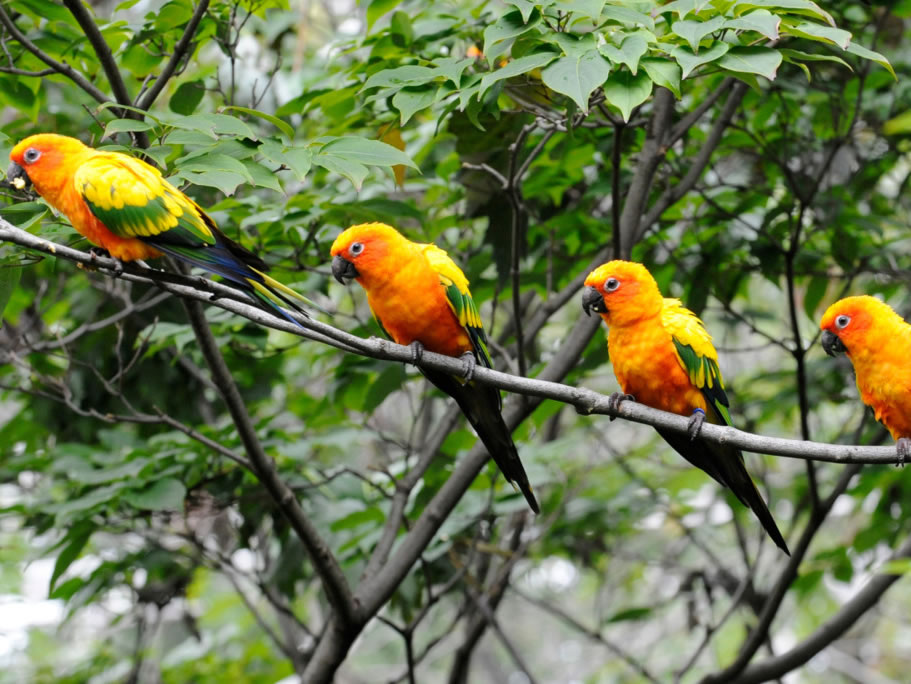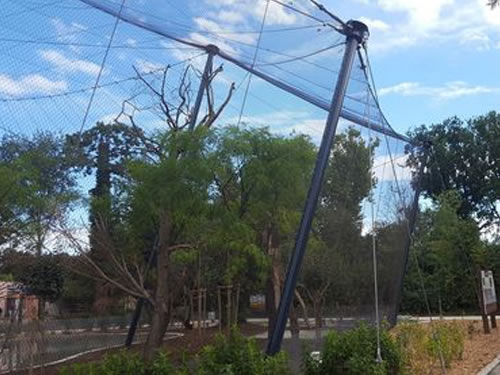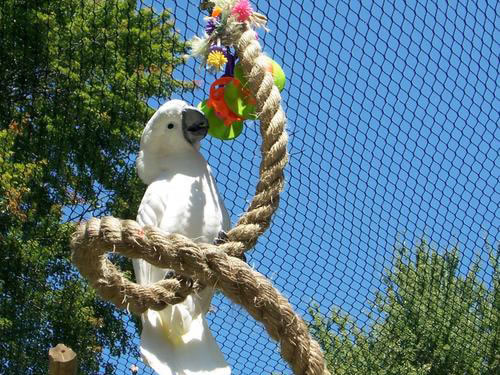When we picture a thriving aviary – a sanctuary for vibrant parrots, delicate finches, or majestic birds of prey – our minds often jump to lush plants, spacious perches, and fresh water. But there's a silent, crucial element holding this entire ecosystem together, quite literally: Aviary Netting. It's the invisible barrier that defines the space, protects its inhabitants, and allows them to flourish safely.
More than just a cage, the right aviary netting is fundamental to avian welfare and successful aviculture. Here’s why choosing and maintaining it deserves careful attention:
Containment: The most obvious role. High-quality netting prevents birds from escaping into potentially dangerous environments (predators, traffic, harsh weather).
Predator Protection: It acts as a vital barrier against cats, rats, snakes, hawks, and other predators that could decimate your flock. Mesh size and strength are critical here.
Injury Prevention: Properly tensioned and knotted netting (especially knotless varieties) minimizes the risk of birds catching toes, beaks, or wings, which can lead to severe injury or death. Smooth, flexible materials are key.
Environmental Hazards: Netting shields birds from excessive wind, driving rain, hail, and even provides some shade from harsh sun.
Aviary netting faces constant assault:
UV Radiation: Sunlight relentlessly degrades materials. Look for UV-stabilized polyethylene or polypropylene netting specifically designed to resist brittleness and fading for many years.
Weather Extremes: It must withstand freezing temperatures, high heat, rain, and snow without losing integrity or becoming hazardous.
Bird Beaks: Especially for parrots or larger birds, the netting needs to resist chewing and pulling. Heavier gauge netting or specific reinforced types are essential.
Tension: Proper installation under correct tension prevents sagging (a hazard and eyesore) and ensures the netting performs optimally under wind load.
Polyethylene (PE): The most common choice. Lightweight, flexible, UV-resistant, and relatively affordable. Ideal for most small to medium birds and flight aviaries. Knotless PE netting is excellent for safety.
Polypropylene (PP): Generally stronger and more abrasion-resistant than PE. Often used for larger birds or areas requiring extra toughness. Can be slightly stiffer.
Stainless Steel: Used in high-security areas (e.g., zoos, endangered species breeding), extremely durable and predator-proof, but significantly more expensive and complex to install.
Nylon: Less common now due to poorer UV resistance compared to PE/PP. Can degrade faster outdoors.
Avoid: Galvanized steel or materials treated with toxic chemicals (like lead or zinc) – these can cause fatal heavy metal poisoning if birds chew on them.

Small Birds (Finches, Canaries): 1/2 inch (12mm) or 3/4 inch (19mm) mesh prevents escape.
Medium Birds (Cockatiels, Conures): 1 inch (25mm) or 1.5 inch (38mm) is often suitable.
Large Birds (Macaws, Cockatoos): Requires heavy-duty netting with larger mesh (2 inch / 50mm or more), but material strength becomes paramount over small mesh size. Often custom solutions or stainless steel are needed.
Predator Exclusion: Mesh must be small enough to keep target predators out (e.g., very small mesh for rats, strong mesh for raccoons).
Even the best netting fails if poorly installed.
Frame: Needs a robust, rust-resistant frame (galvanized steel, aluminum, treated timber) capable of handling tension and wind load.
Tensioning: Netting must be pulled taut using appropriate tensioning systems (cables, clamps, battens) to prevent sagging and billowing.
Overlap & Seams: Securely fasten all seams and overlaps to eliminate gaps.
Ground Anchoring: Ensure the netting is securely anchored to the ground or buried to prevent predators from digging underneath.
While safety is paramount, netting doesn't have to be an eyesore. Black or dark green netting tends to blend best with foliage, becoming less visually intrusive. Proper tensioning also creates a cleaner, more professional look.
Aviary netting isn't just a purchase; it's a critical infrastructure investment for the health, safety, and well-being of your birds. Cutting corners here risks tragedy. By prioritizing UV-stability, appropriate strength and mesh size, safety features (like knotless design), and professional installation, you create the secure foundation upon which a truly thriving avian sanctuary can be built. It allows your birds the freedom to fly, socialize, and exhibit natural behaviors within the safety of their protected haven – the unsung hero making the magic of flight visible and safe. Choose wisely, install correctly, and inspect regularly! Your birds will thank you for it.
 The Perfect Fit: Choosing Aviary Mesh Size for Different Bird Species
The Perfect Fit: Choosing Aviary Mesh Size for Different Bird Species
 Beyond Bars: Why Stainless Steel Rope Mesh is Revolutionizing Bird Enclosures
Beyond Bars: Why Stainless Steel Rope Mesh is Revolutionizing Bird Enclosures
 The Unsung Hero of Bird Havens: Why Aviary Netting Matters More Than You Think
The Unsung Hero of Bird Havens: Why Aviary Netting Matters More Than You Think
 How to choose Aviary Netting
How to choose Aviary Netting